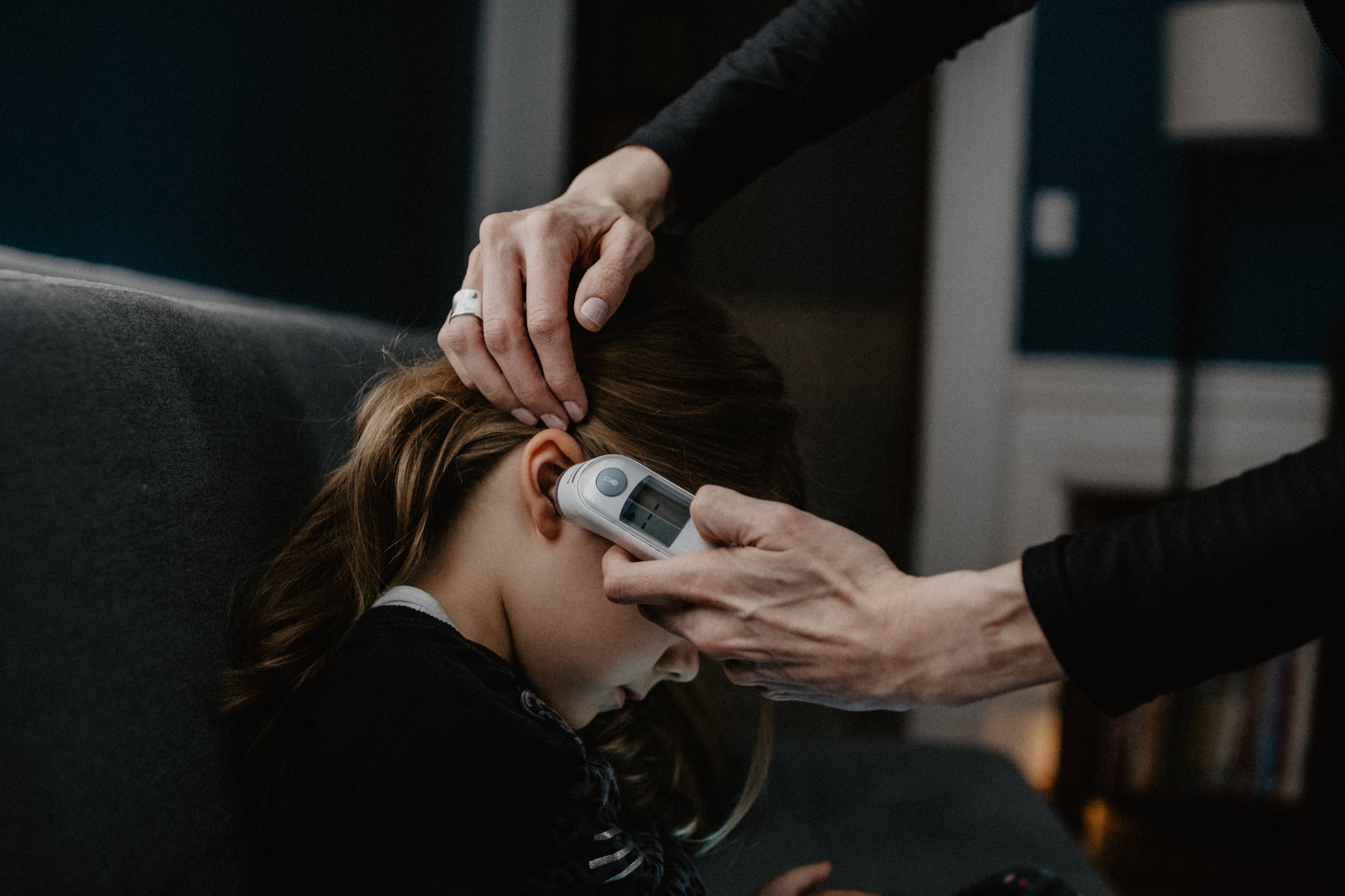
In the midst of the global coronavirus pandemic, parents have had plenty to worry about [1]. Recent news of a mysterious and dangerous disease called Kawasaki disease that may be linked with COVID-19, the disease caused by the novel coronavirus, has only added to that worry.
It is true that there has been a recent uptick in a multi-system inflammatory disease that presents with many of the same symptoms as Kawasaki disease. As of May 4, 2020, the New York City Health Department was reporting that 15 cases had been identified in children ages 2 to 15 in New York City hospitals [2], 10 of whom tested positive for coronavirus [3]. Cases have also been noted in the UK [4], Italy, and Spain [5]. While the statistics may sound scary, POPSUGAR spoke with two pediatricians familiar with this disease to learn more about it and help parents replace fear with facts.
What Is Kawasaki disease?
According to Mayo Clinic, Kawasaki disease [6], sometimes called mucocutaneous lymph node syndrome, "causes swelling in the walls of medium-sized arteries throughout the body." While it is treatable and most children fully recover without any lasting damage, it is considered dangerous because "it is the leading cause of acquired heart disease in children."
Nazia Sheriff, MD, a pediatrician with Olive Leaf Pediatrics [7] in Orinda, California told POPSUGAR via email, "Kawasaki disease is typically seen in children ages 2 to 12 years old, but is more common in children less than 5 [8]." In regards to the recently documented cases, Kelly Fradin, MD [9], a pediatrician in New York City, told POPSUGAR via email, "What we are seeing now is more than just typical Kawasaki disease, though, because of the very high percentage of the reported children requiring ICU admission for blood pressure support and mechanical ventilation."
What are the symptoms of Kawasaki disease?
Dr. Sheriff told us, "The first sign is a high fever and blotchy red rash [10] which lasts for at least five days or more. This is often accompanied by extreme fussiness or irritability." She went on to say, "As the disease progresses, you might see red eyes, red and cracked lips, bright strawberry like tongue, and swelling in the hands and feet."
If you notice any of these symptoms, whether or not your child had a confirmed case of COVID-19 infection, Dr. Fradin recommends that you talk to your child's physician [11]. "If parents note that their child has a fever and a significant rash, they should contact their physician by phone to further discuss the situation," she said.
How is Kawasaki disease linked with COVID-19?
According to the above-mentioned New York City Health Department report, of the 15 recent cases of a Kawasaki-like disease, four were found to be positive for coronavirus via nasal swab testing, while the rest were negative. When the 10 negative cases were given an antibody blood test, however, six came back positive.
Dr. Fradin also acknowledges the link, saying, "This suggests that this is an immune mediated reaction occurring during recovery from the virus. As a scientific community we have been stumped by Kawasaki disease for some time, but suspected that it was triggered by viruses." Dr. Sheriff agreed, adding, "Kawasaki disease can occur after common cold viruses, so it's not surprising that we are seeing cases after a COVID infection [12]." Basically, Kawaski disease often occurs after the body recovers from a virus — meaning Kawasaki appearing after a bout of COVID is not a new behaviour of the disease.
What is the treatment for Kawasaki disease?
Kawasaki disease is typically treated with "IVIG, an intravenous infusion, [13] which is basically pooled antibody from many donors," Dr. Fradin told us. "This calms the inflammation of the small and medium blood vessels and can prevent long term complications from Kawasaki disease, most importantly damage to the coronary arteries that supply the heart muscle with oxygen." What's notable about these recent reports, according to Dr. Fradin, is the rate of ICU admission. In one study from October 2004 to October 2014, of 1,065 patients with Kawasaki disease, only 30 were admitted to the ICU [14]. Of the 15 cases in NYC, more than half required blood pressure support, and five required mechanical ventilation [15].
Should parents be worried about Kawasaki disease?
"Kawasaki is not a very common disease with an incidence of less than 25 cases for every 100,000 children [16]," Dr. Sheriff said. There's at least 3,000 cases diagnosed each year in the United States [17]. Dr. Fradin added, "The biggest and most urgent unknown is determining the lag between COVID-19 exposure [18] and presenting with this new syndrome. If it's long we may see many more cases, but if it's shorter or more variable, we may not, and this case cluster may be occurring due to the high number of Kawasaki disease cases in New York City."
While the symptoms and severity of this disease are concerning, typical Kawasaki disease is a rare condition. Dr. Fradin doesn't want parents to panic [19]. "If your child already had coronavirus, there would be a 99.975 percent chance they do not develop this (Kawasaki-like) complication, and it is treatable with appropriate care," she said in a recent Instagram post. As always, if you have questions or concerns about your child's health, you should speak with your child's pediatrician.
POPSUGAR aims to give you the most accurate and up-to-date information about the coronavirus, but details and recommendations about this pandemic may have changed since publication. For the latest information on COVID-19, please check out resources from the WHO [20], CDC [21], and local public health departments [22].